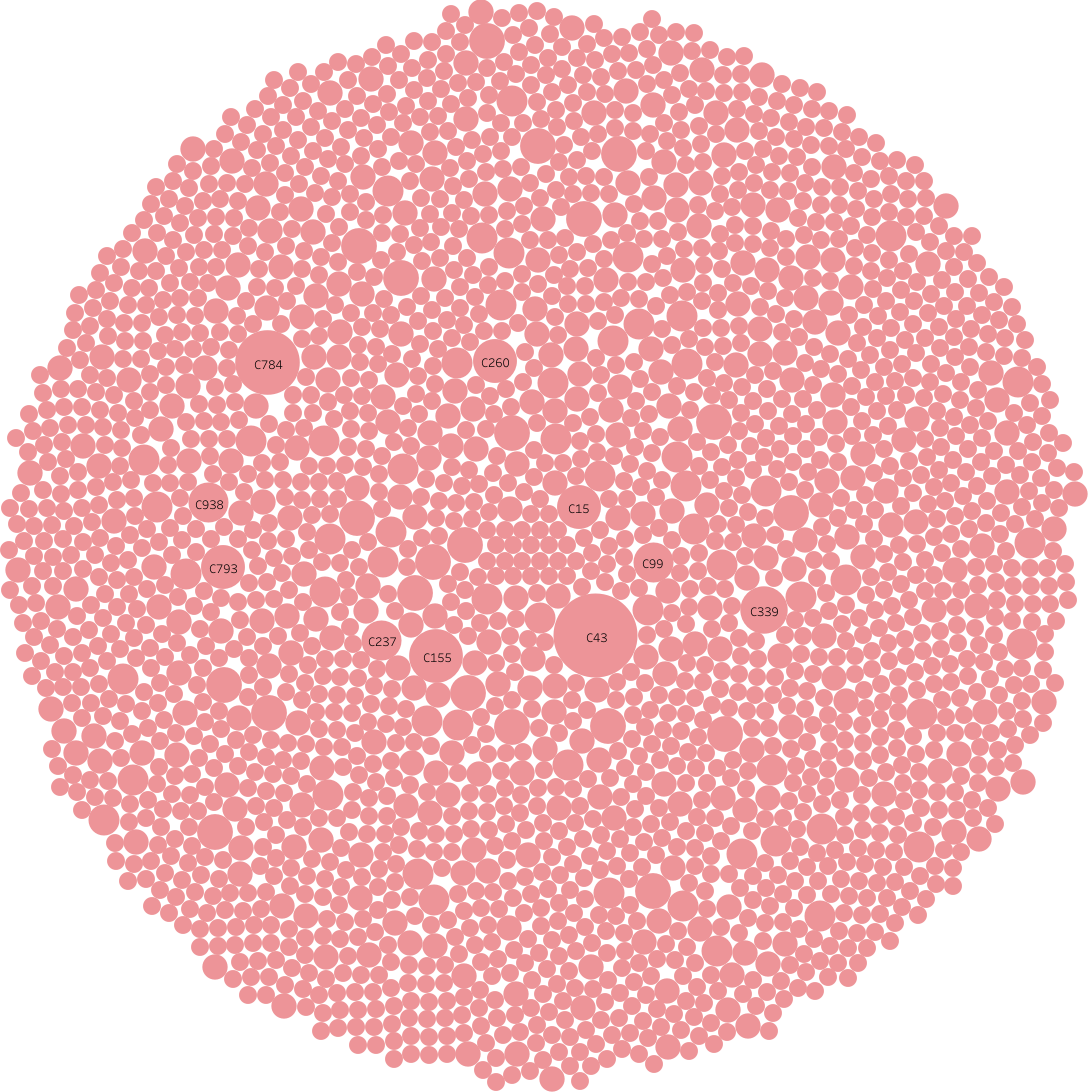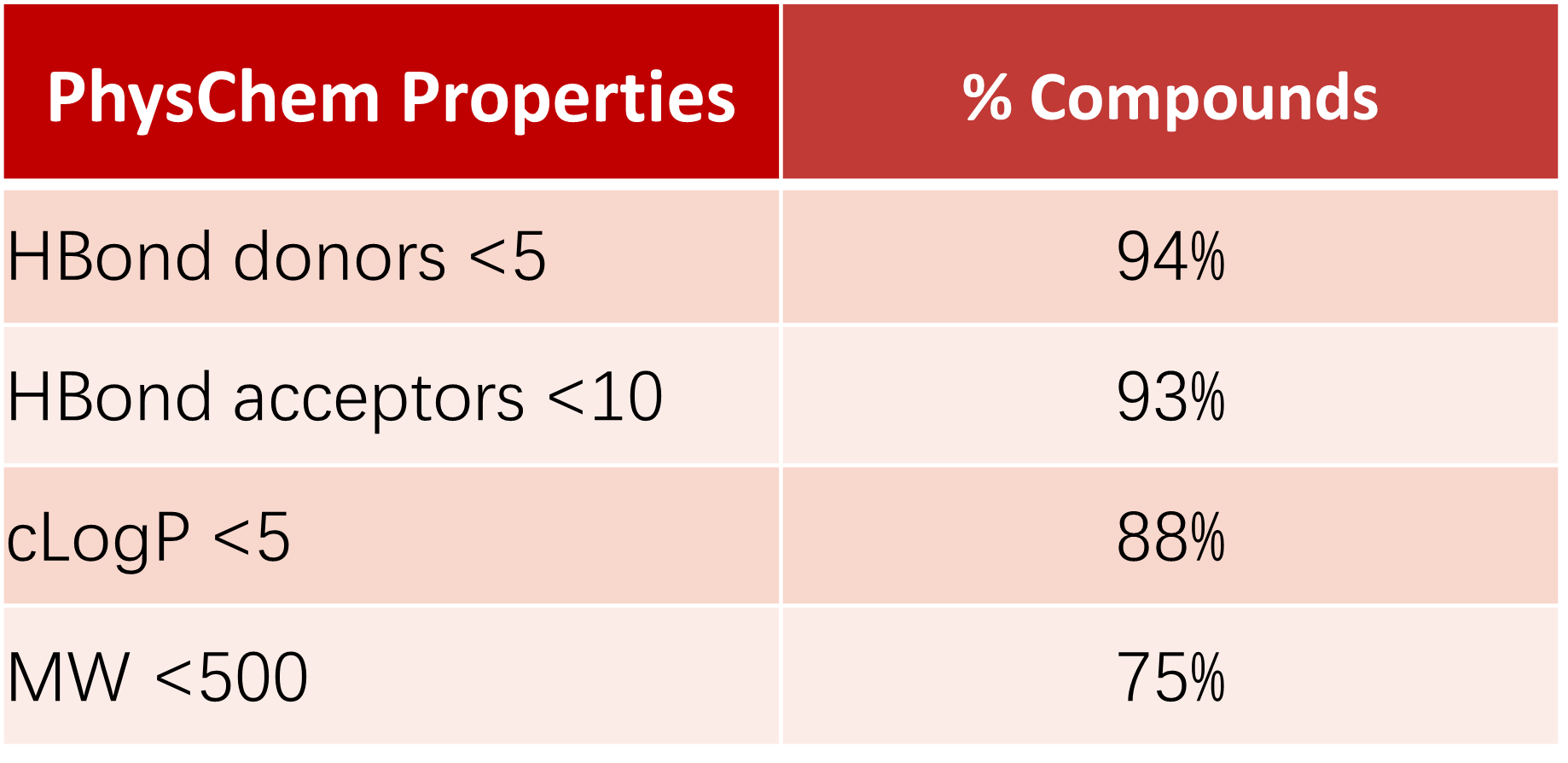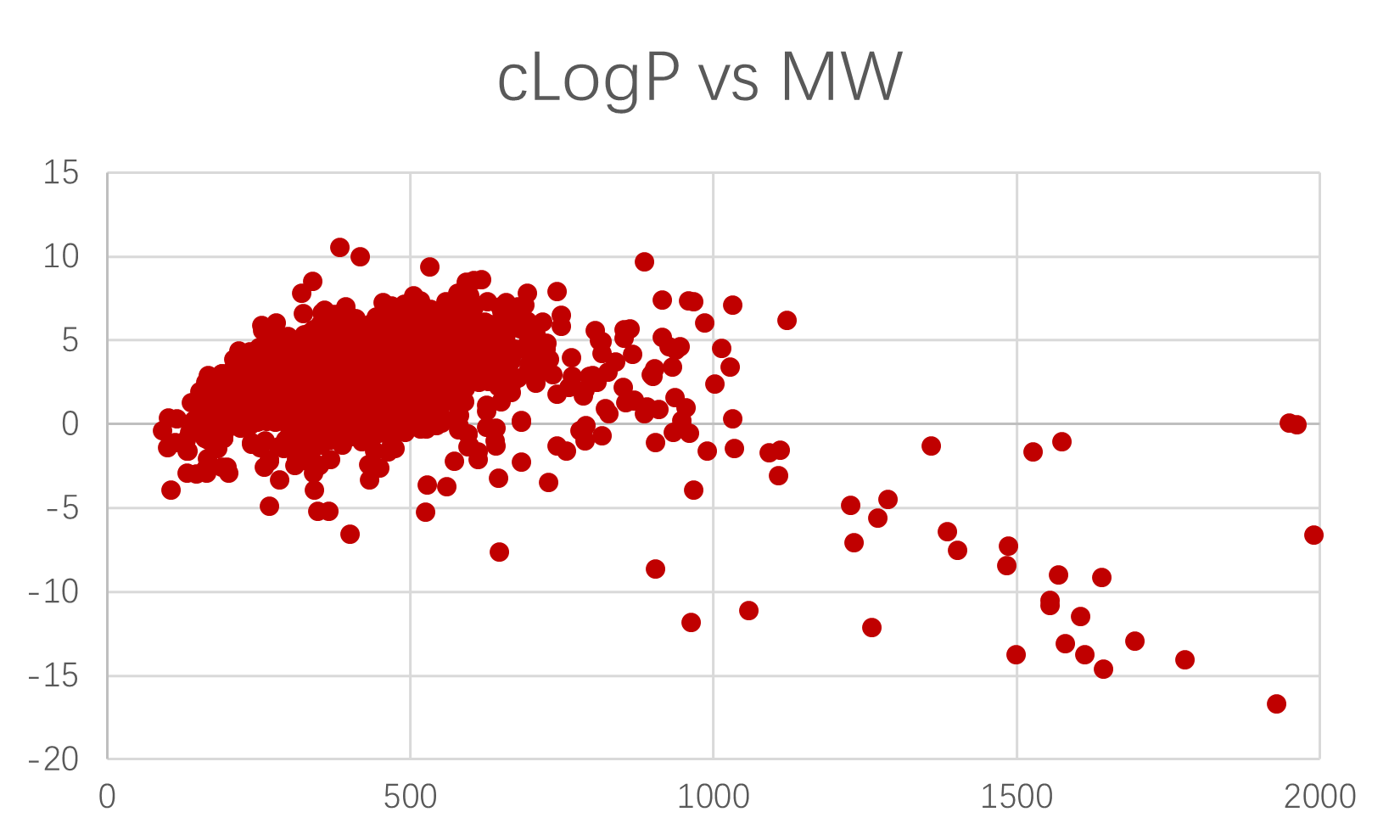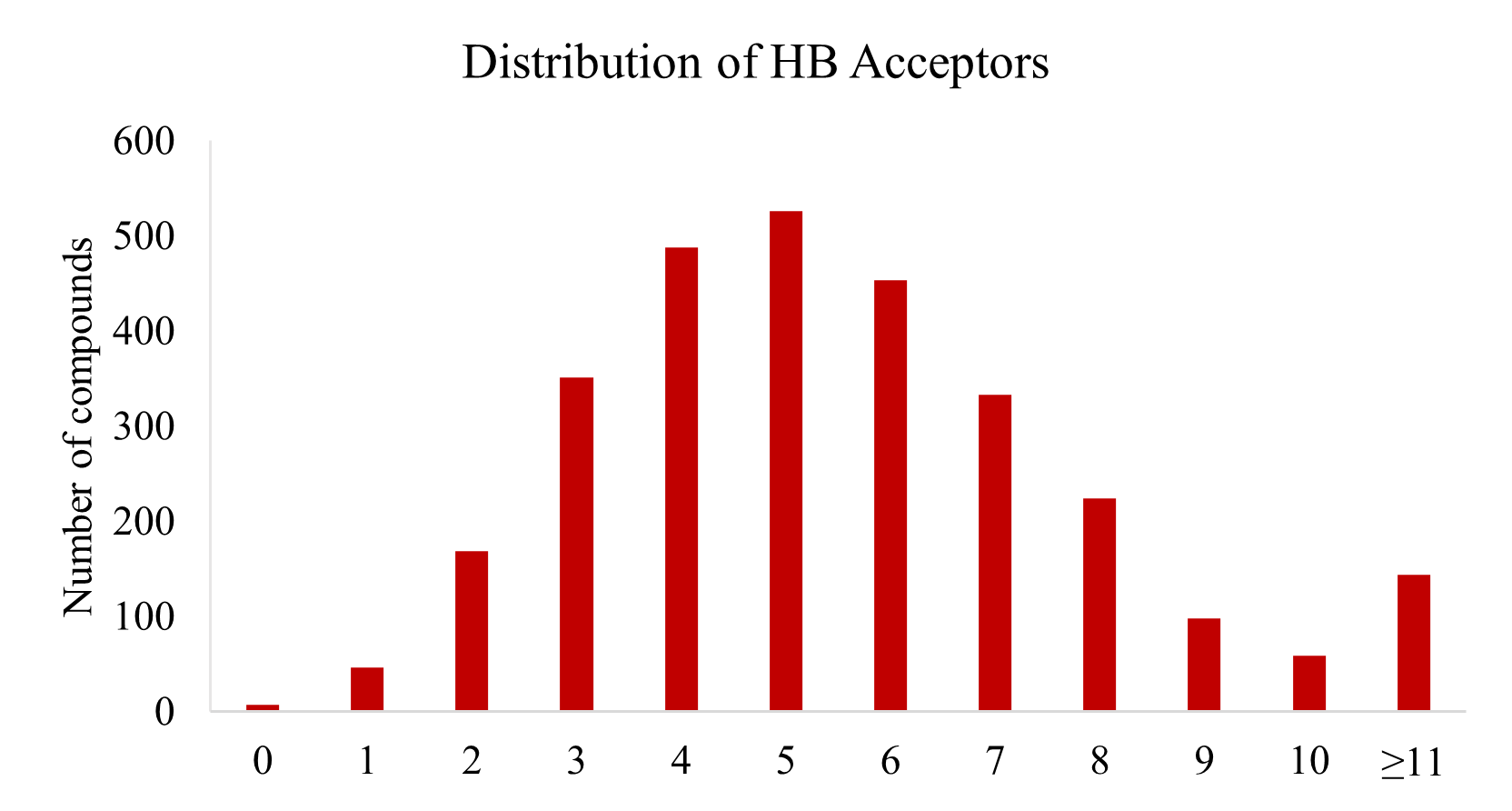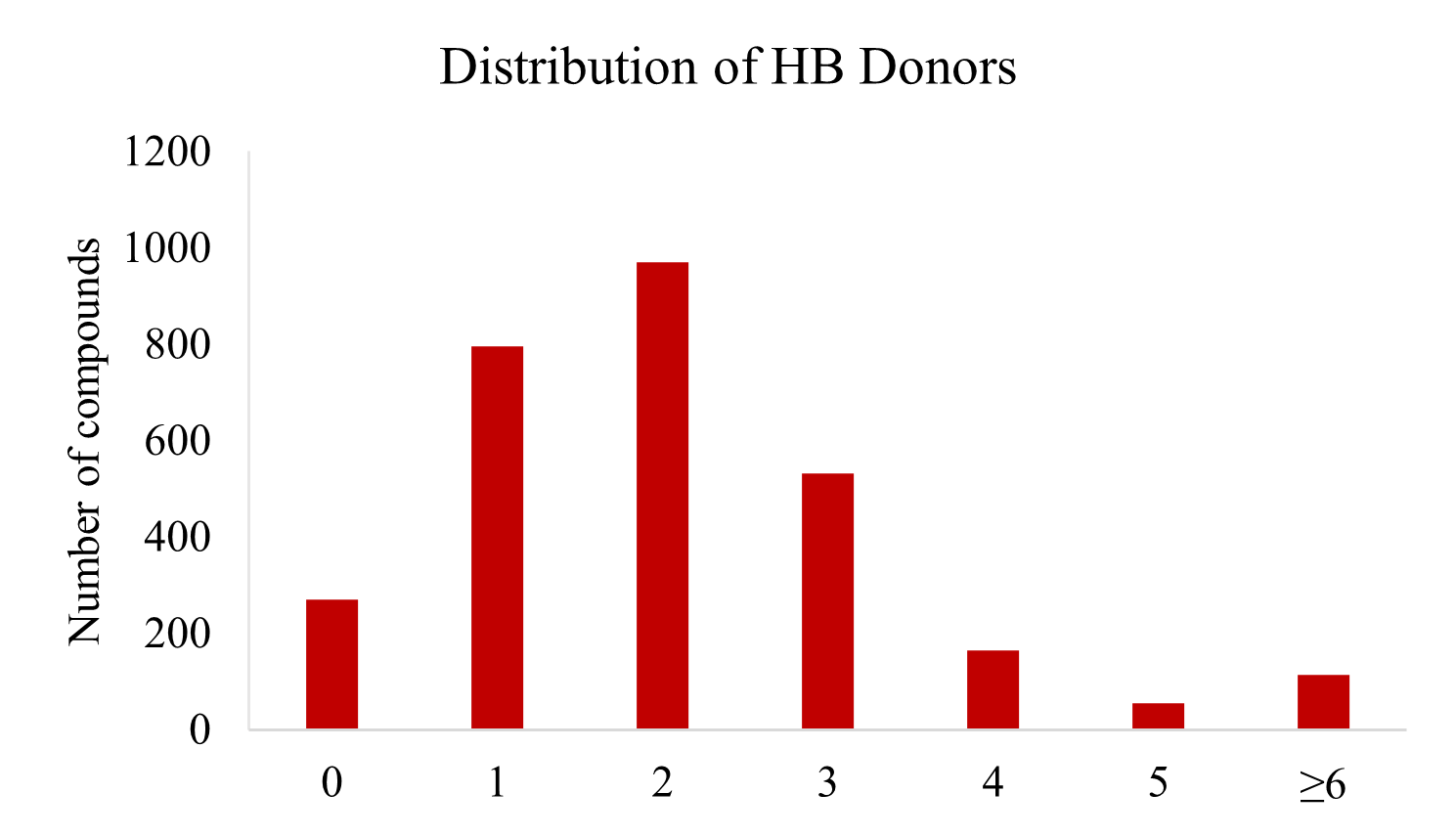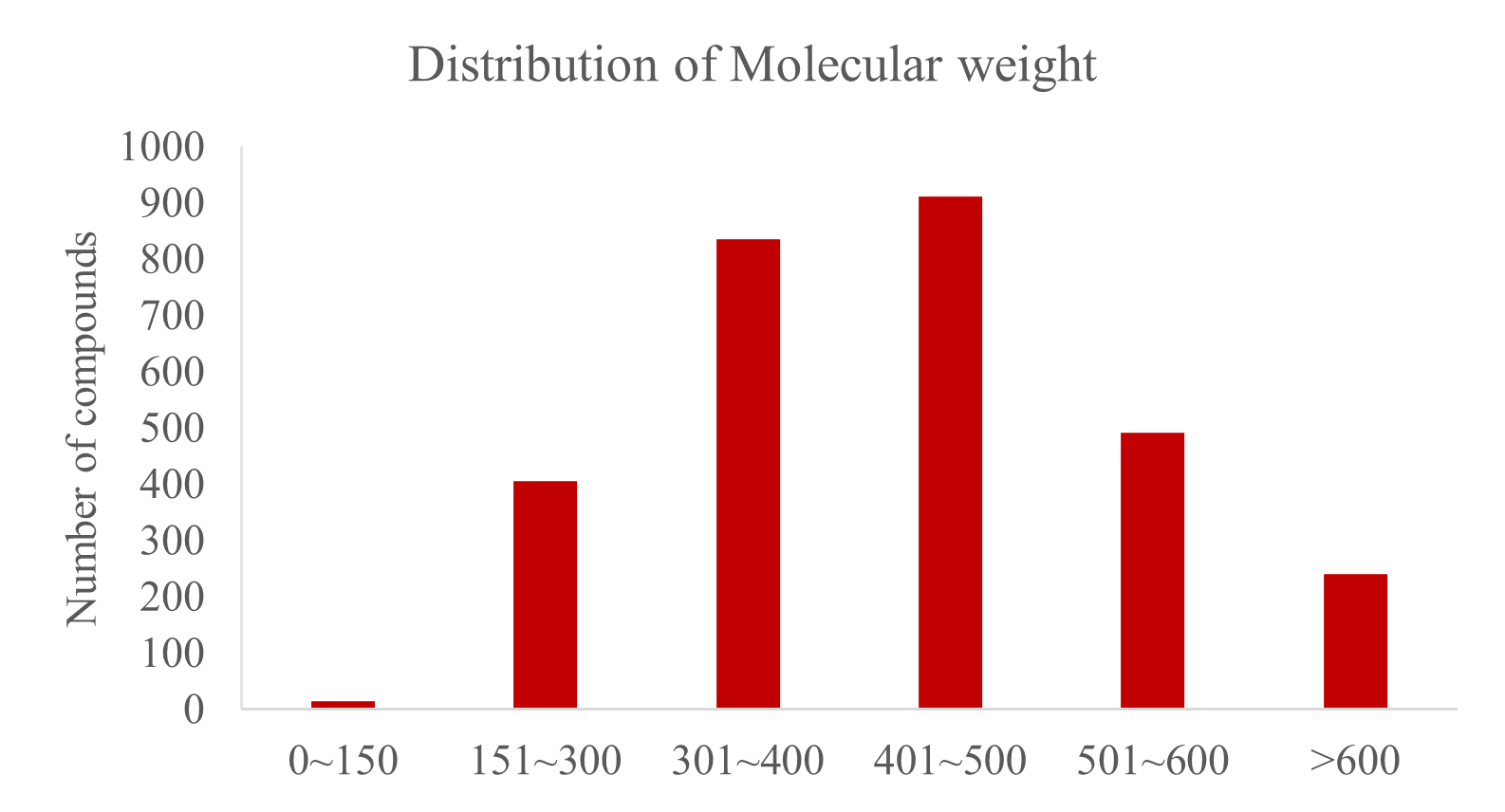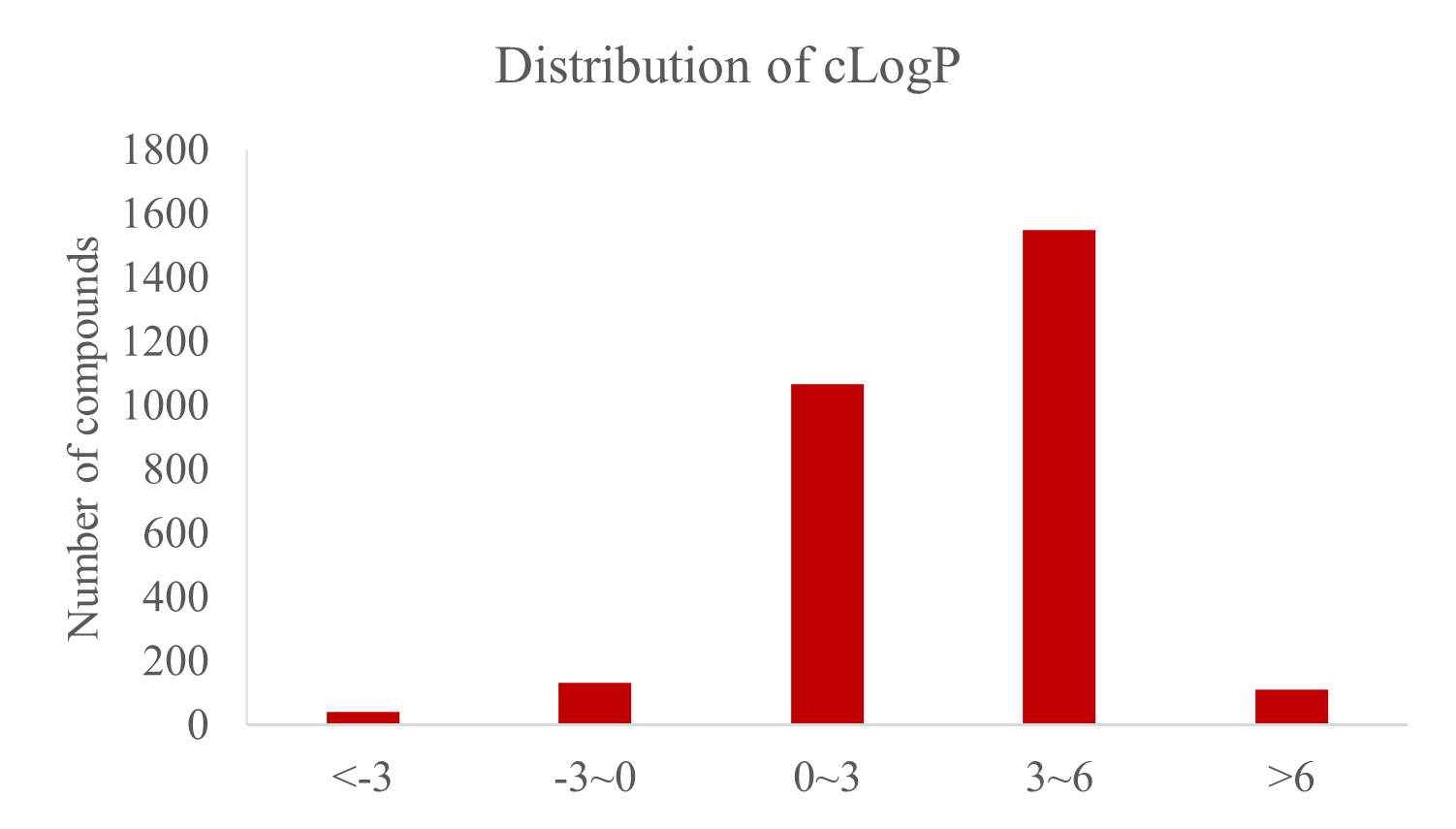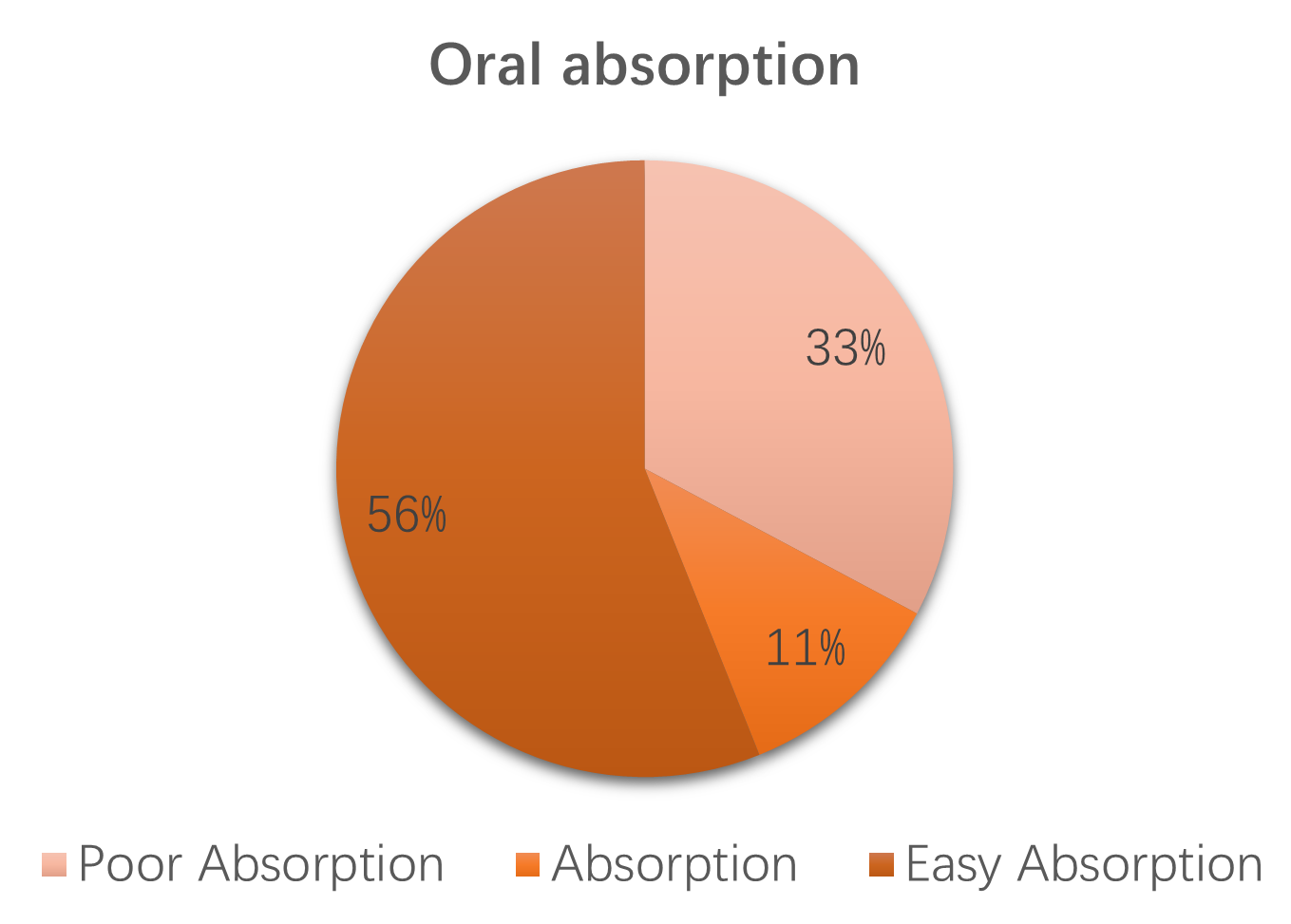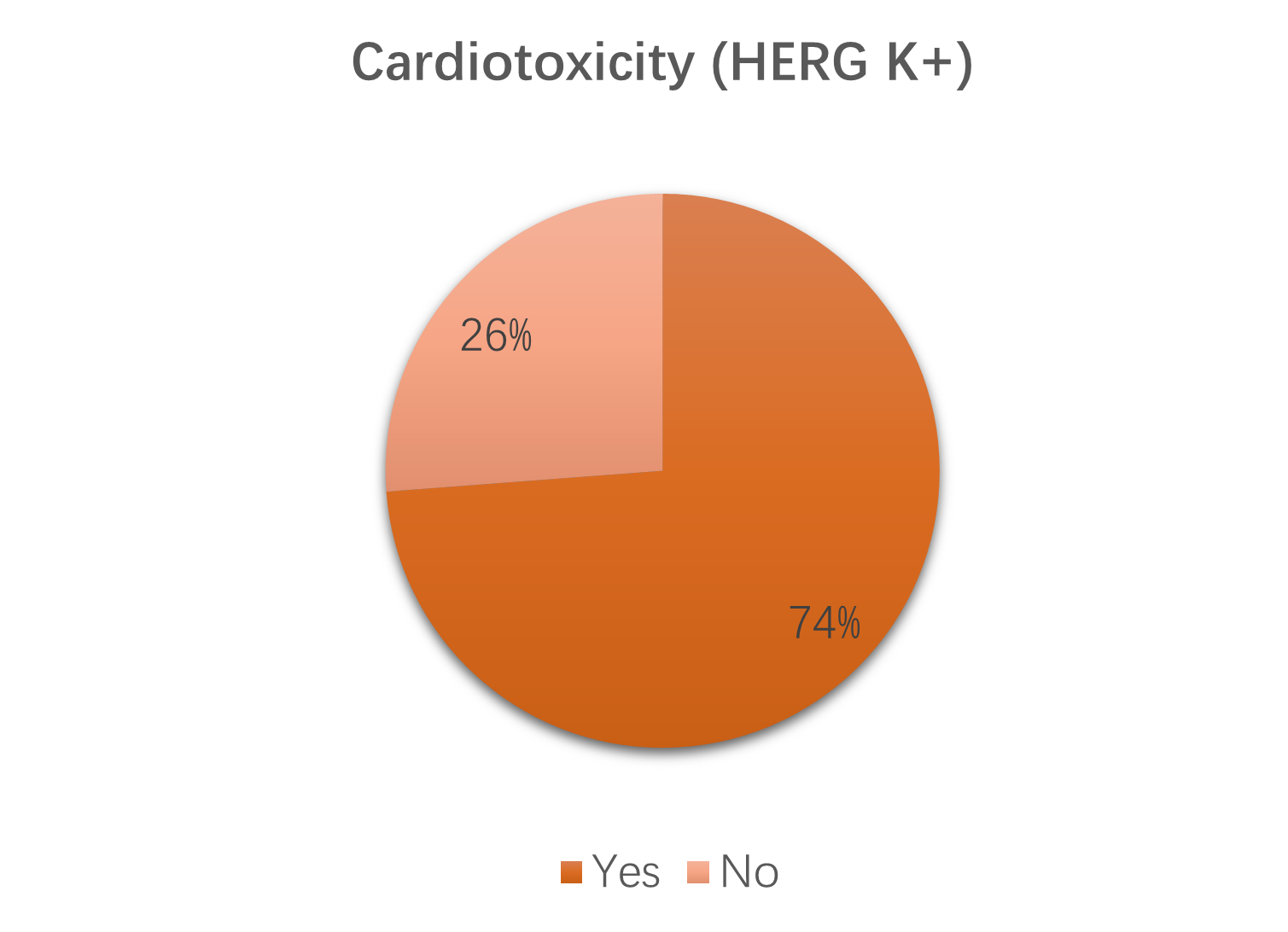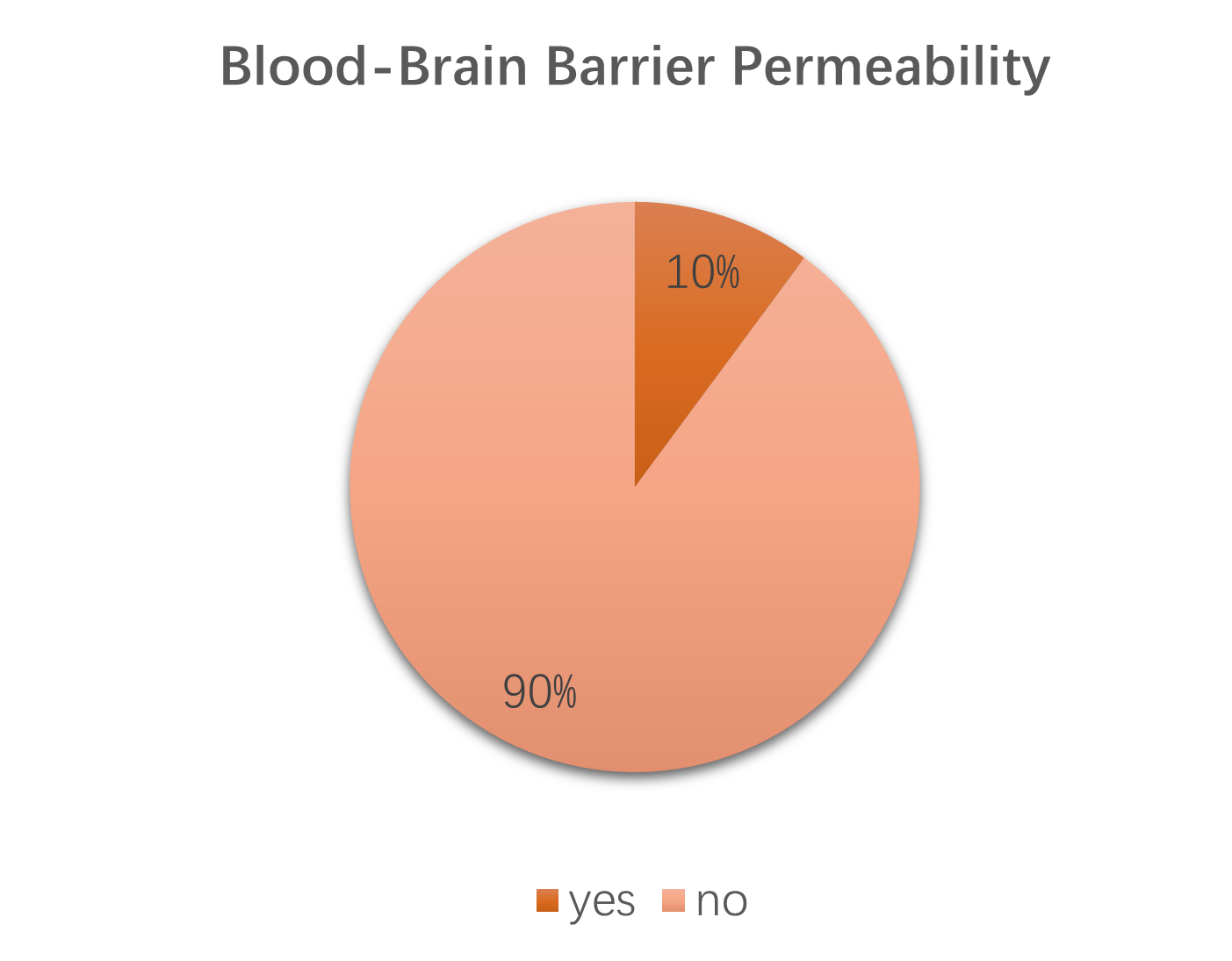High-Standard Entry Criteria
The TargetMol’s Kinase Inhibitor Library is built on strict entry criteria to ensure that every compound in the library possesses a well-defined structure and high purity, verified through multiple analytical techniques such as NMR, HPLC, and LC-MS. Through a multi-tiered screening process, we effectively eliminate mixtures, polymers, and other compounds with ambiguous structures.
Significant Structural Diversity
The TargetMol’s Kinase Inhibitor Library features remarkable structural diversity, offering significant advantages in drug discovery. Based on an 85% MACCS fingerprint similarity threshold, the library can be categorized into 2,389 clusters, effectively covering a broad chemical space. The compounds in the library range from simple to highly complex chemical structures, providing a wide array of possibilities for identifying lead compounds with high affinity and specificity for target proteins. This diversity greatly enhances the potential for drug innovation. Whether targeting traditional drug targets or emerging, more challenging ones, the Kinase Inhibitor Library offers a rich source of candidate compounds to accelerate the drug development process.
Library Diversity Analysis
Excellent Drug-Like Properties
68% of the compounds in TargetMol’s Kinase Inhibitor Library comply with Lipinski’s Rule of Five (Ro5), indicating favorable bioavailability and permeability.
Multidimensional Pharmacokinetic Analysis
A comprehensive evaluation of TargetMol's Kinase Inhibitor Library was conducted, systematically analyzing three key pharmacological parameters: blood-brain barrier permeability, cardiotoxicity (HERG K+ channel blockade), and oral absorption properties.
Extensive Target Coverage
Protein kinases, as key regulators of intracellular signaling pathways, play crucial roles in the pathophysiology of various diseases and have become one of the most prominent targets in 21st-century drug development. As of June 2025, the FDA has approved 88 protein kinase inhibitors, covering more than twenty different kinases. The human kinome consists of over 500 protein kinases, with more than 85% implicated in at least one disease or developmental disorder. Nevertheless, for the majority of protein kinases, no effective inhibitors have yet advanced to the clinical stage, leaving substantial room for exploration in kinase inhibitor development.
Kinase inhibitors are especially critical in the development of anticancer therapies. Many types of cancer are associated with the abnormal activation of specific kinases, which promote tumor progression by regulating key processes such as cell proliferation, apoptosis, and angiogenesis.
Inhibitors designed to target specific kinases can not only effectively block cancer cell growth but also show tremendous potential in preclinical research and early-stage clinical trials.
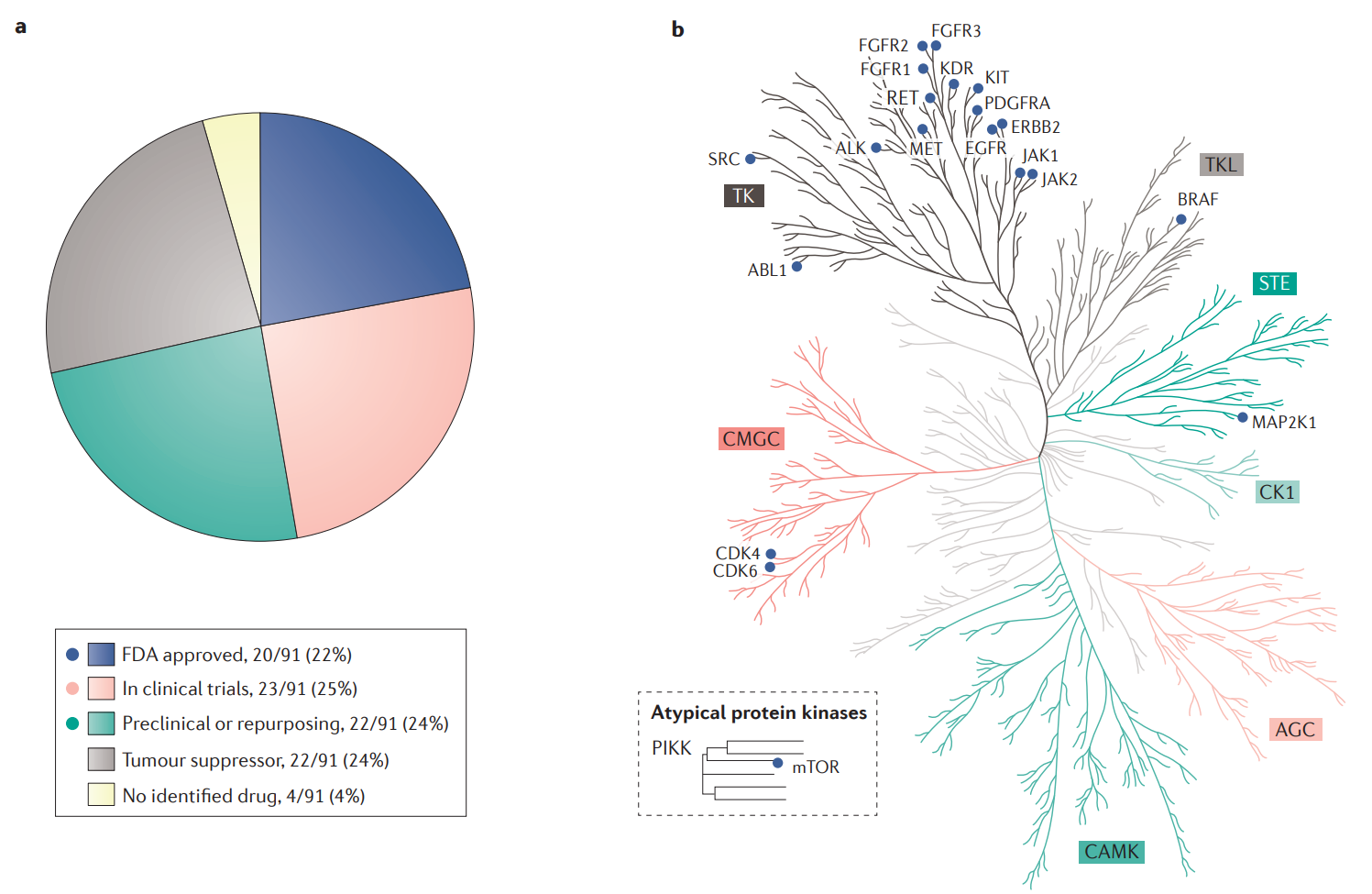
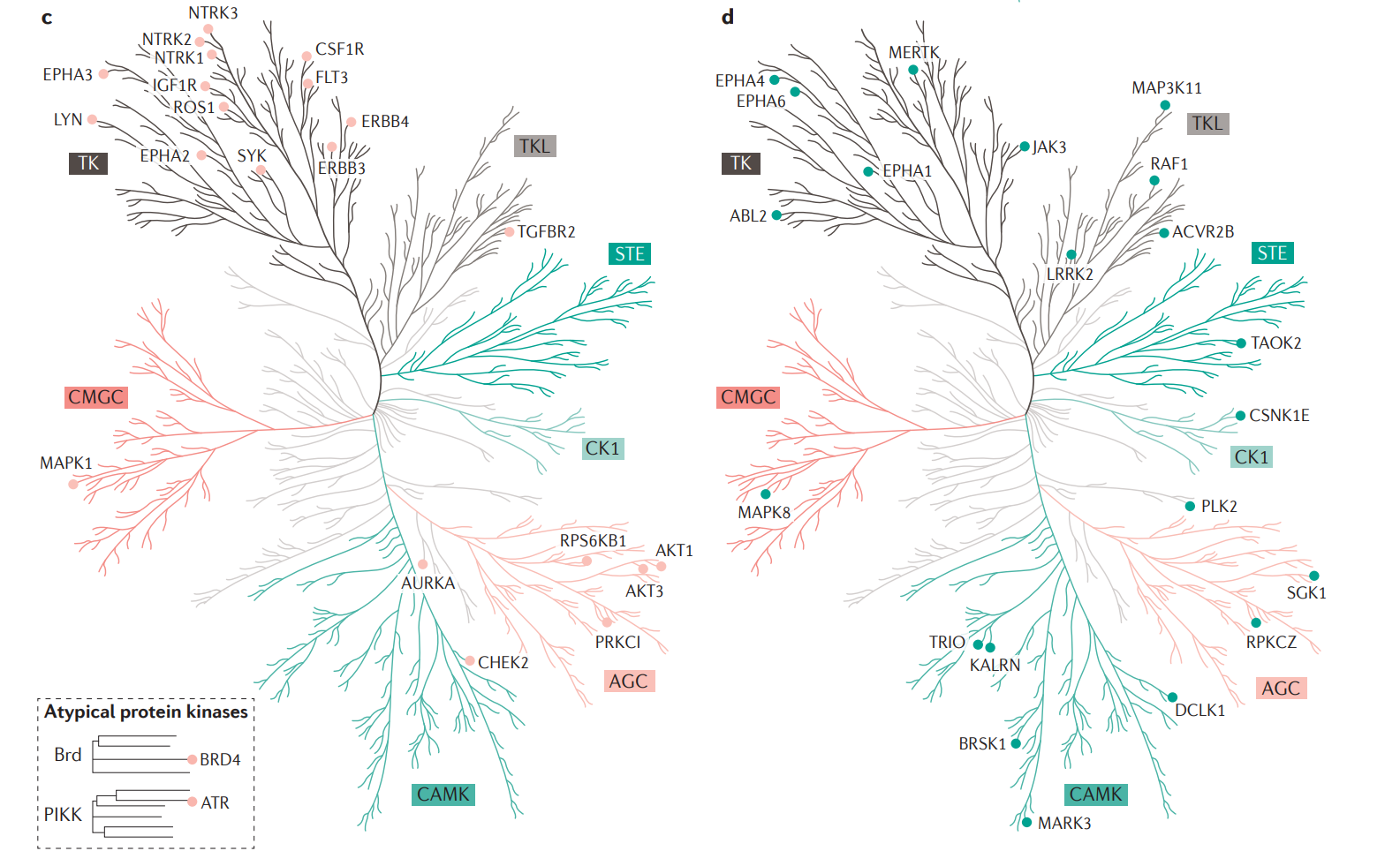
Status of driver kinases in therapeutic development (Fleuren, E., Zhang, L., Wu, J. et al. The kinome 'at large' in cancer. Nat Rev Cancer 16, 83–98 (2016).)
TargetMol's kinase inhibitor library encompasses inhibitors targeting a wide range of key kinase family members, including AGC, CAMK, CK1, CMGC, Other, STE, Tyrosine Kinase (TK), Tyrosine Kinase-Like (TKL), and Atypical groups. This comprehensive collection covers approximately 300 kinases across the human kinome. The extensive target coverage empowers researchers to more effectively identify and develop selective inhibitors, helping to overcome challenges associated with kinase structural similarity and selectivity. This feature is crucial for accelerating the discovery of therapeutic strategies for cancer as well as other debilitating diseases, such as autoimmune disorders, diabetes, and neurological diseases.
Regular Database Updates
We regularly update our database to ensure that our compound libraries include the latest compounds, keeping your research at the forefront of scientific discovery.
Flexible Packaging Options
We offer a variety of standard packaging sizes (such as 30μL, 50μL, 100μL, 250μL, 1 mg), and can provide customized packaging solutions tailored to your specific needs.
Customized Services
To support researchers in achieving their specific research goals, we provide fully customized screening services, including the design and synthesis of tailored compound libraries and personalized project screening. Our highly flexible service model is designed to efficiently meet the unique needs of scientific research and accelerate groundbreaking discoveries.
 Your shopping cart is currently empty
Your shopping cart is currently empty



